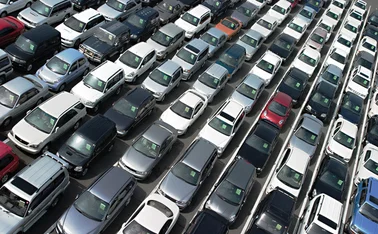
Five foundations for the reform of China
Reform also involves society, politics, culture and ecology

At present, the slowdown of China's economy remains a concern. On the one hand, the worry seems justified. The economic cycle of China is about 10 years, and in the past 10 years, the country's average annual growth rate was around 10%. But from the beginning of 2012, economic growth slowed down, dropping to 7.3% in 2013. The growth rates of the first three quarters in 2014 were respectively 7.4%, 7.5% and 7.3%. On the other hand, perhaps we should not be unduly worried. China has started the process of reform, all of which is sustainable and all-encompassing. And this reform is not only related to the economy, but also involves society, politics, culture and ecology. Five interpretations help lay the foundation for a preliminary understanding of the next step of China's reform.
Changing focus
First of all, the existing development model, focusing only on GDP growth, must be changed to stimulate investment. Rapid growth in the past 10 years was mainly dependent on tremendous investment. Especially after the release of the 4 trillion yuan stimulus package in 2008, China's bad debts increased geometrically. If one included the issue of bad debts, the economic growth rate in 2009 would probably have been closer to 2%. To achieve the high-speed economic growth we actually saw in 2009, China tolerated the increase of bad debts. But after 2009, the consequences of these misleading incentives began to emerge. Many industries found themselves encumbered by overcapacity and excessive inventories.
Secondly, investment returns began to decline and environmental costs became increasingly serious. Research had been done in 2005 and 2010 respectively looking at the environmental costs, including pollution and inefficiency. According to this research, the costs accounted for approximately 13.5% of GDP in 2005 and 12.6% in 2010. However, GDP growth rates in 2005 and 2010 were both 10.4%. When the environmental costs exceed economic growth, they will be passed on to the next generation.
Thirdly, there has been a rapid accumulation of local government debt. Local government debt in mid-2010 reached 10.7 trillion yuan. What is more, according to estimates by the Ministry of Finance, total local government debt rose to 20 trillion yuan in 2013, increased by 5.4% proportionally, accompanied by the emergence of a real-estate bubble. In 2009, real-estate sales increased by 43% and house prices rose accordingly. From 2010 to 2013, the average annual growth rate of house prices was 6.58%.
China must transform its growth mode, avoid overinvestment and change its blind worship of GDP growth. Traditional economic reform has focused too much on GDP growth, as this is used as the benchmark for assessing the performance of local governments. There are many other problems. For example, some jerry-built projects contribute to inflated GDP statistics, but cannot achieve their aims after completion - various financial and technical problems hinder the operation of projects, and local governments have to subsidise the subsequent operation, which is also counted in GDP.
Once again, the system is biased towards the blind worship of GDP. For example, estimated investment in 2014 was 1 trillion yuan, 10% of which was exaggerated and could not lead to a higher GDP. Therefore, to achieve the same GDP growth rate in 2015, more capital is needed, which means total investment will reach 1.1 trillion yuan. The figure also illustrates why total investment in China has been increasing.
To fundamentally solve these problems, investment must be reduced and maintained at a reasonable level; at the same time, authorities must pay more attention to consumption and find ways to stimulate it. In addition, the environment is one of the key topics for future development. More resources should be devoted to environmental protection, including improving energy efficiency, reducing pollution and protecting the ecological system.
Tackling inequality
Fourthly, a pressing problem is the need to narrow inequality. At present, the most prominent inequality in China occurs between urban and rural areas. The average income of urban citizens is three times that of rural citizens, and urban residents enjoy far superior public services. Urban-rural inequality can be attributed to two factors. First, agricultural productivity in China is low. According to a Chinese Academy of Science report in 2012, agricultural labour productivity is only 2% of that in developed countries and just 1% of US productivity levels. Second, there is surplus labour in rural areas, which has limited production capacity and provides a near-zero marginal consumption. What is more, surplus labour in rural areas has not been transferred to productive parts of the economy in an efficient manner.
At the time of the creation of the People's Republic of China, land was distributed to the nation's farmers. But under the commune movement after 1995, farmers' private lands were taken into public ownership in the form of people's communes, which had a major impact on rural development.
The government has recently introduced four reform measures, which aim to improve the wealth of the rural population. First, collectively owned land should be circulated in the land market, allowing farmers to transfer land in the market and obtain a higher price. Second, the title deeds of land should be transferable. Farmers could be permitted to gather more land to improve mass production. Currently, land-lease fees in Zhejiang province are equal to 50% of the output of farmland. Third, the usage rights of housing and land in rural areas should be separated. Fourth, the system of township enterprises should be reformed. These four policies guarantee that rural surplus labour can enjoy certain wealth and resources when relocated to urban areas, providing safeguards for their employment, housing and children's education in the cities.
Innovate to advance
Finally, future development relies on technological innovation. China is currently in the third stage of its industrial revolution period, marked by the introduction of computerised and internet services, such as cloud computing and mobile internet services. But none of the innovation in this stage is complete. The second industrial revolution, marked by the extensive use of electricity, also experienced some failures in initial stages. But the revolution wave has always driven forward the development of the social economy. Technological innovation will benefit consumers, and therefore China needs to further develop such innovation, especially in information technology, which will influence and change all industries, but particularly the finance industry. China cannot always rely on imported technology, and must invent its own technology, improve innovation, and create its own business models. Companies such as Alibaba, Tencent and Xiaomi are representative of innovative enterprises in China.
It is education that promotes the development of science and technology. I myself am an economist, and economists can only talk about today, but science ensures a better tomorrow, and education ensures safe and healthy development in the long term. So education should enjoy greater attention and investment. Overall, in the economic cycle of the next 10 years, the annual GDP growth rate has the chance to reach 7% or 8%. How can we achieve such a high level of growth? The first step is to transform the current growth mode that blindly worships GDP. Second is to invest more in environmental protection. Third is to narrow the inequality between urban and rural areas. And finally, China must promote technological innovation.
Only users who have a paid subscription or are part of a corporate subscription are able to print or copy content.
To access these options, along with all other subscription benefits, please contact info@centralbanking.com or view our subscription options here: http://subscriptions.centralbanking.com/subscribe
You are currently unable to print this content. Please contact info@centralbanking.com to find out more.
You are currently unable to copy this content. Please contact info@centralbanking.com to find out more.
Copyright Infopro Digital Limited. All rights reserved.
As outlined in our terms and conditions, https://www.infopro-digital.com/terms-and-conditions/subscriptions/ (point 2.4), printing is limited to a single copy.
If you would like to purchase additional rights please email info@centralbanking.com
Copyright Infopro Digital Limited. All rights reserved.
You may share this content using our article tools. As outlined in our terms and conditions, https://www.infopro-digital.com/terms-and-conditions/subscriptions/ (clause 2.4), an Authorised User may only make one copy of the materials for their own personal use. You must also comply with the restrictions in clause 2.5.
If you would like to purchase additional rights please email info@centralbanking.com








